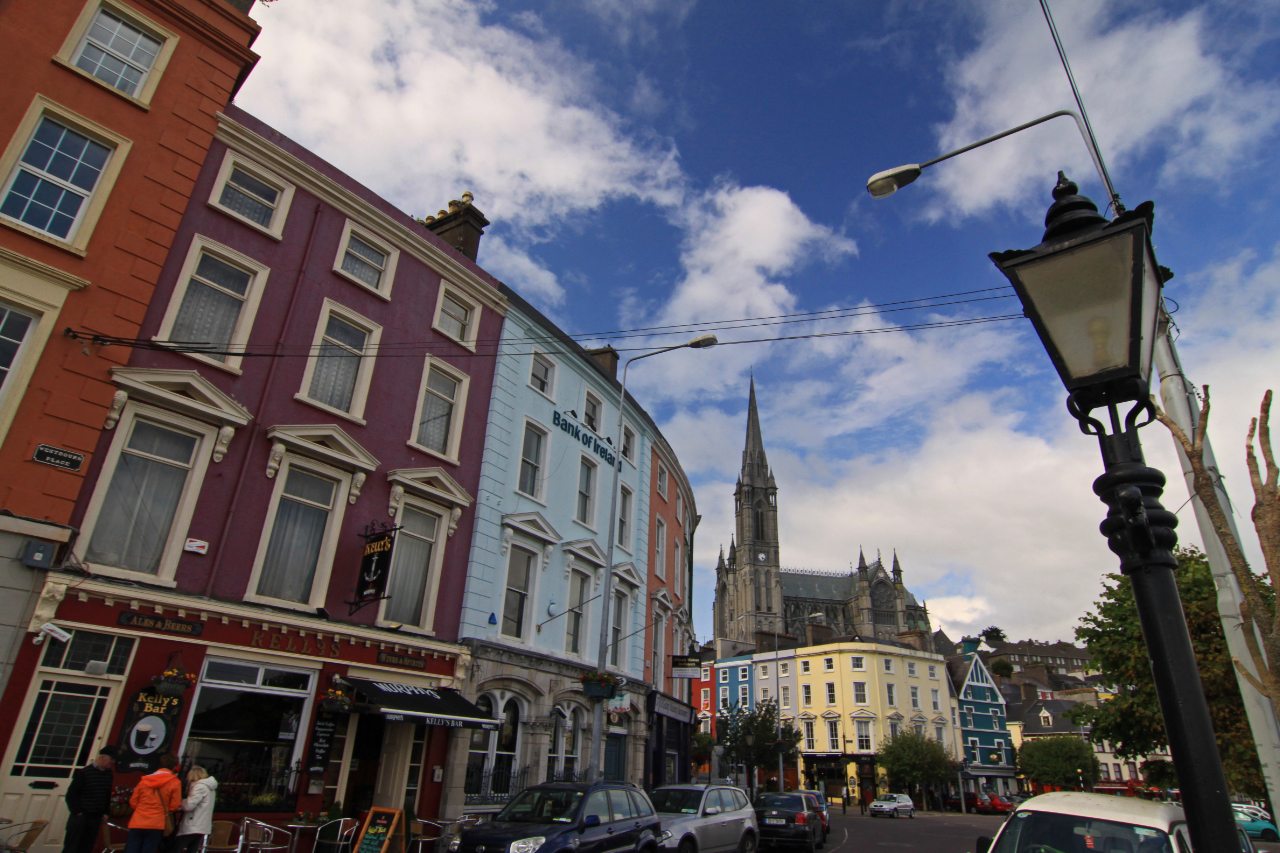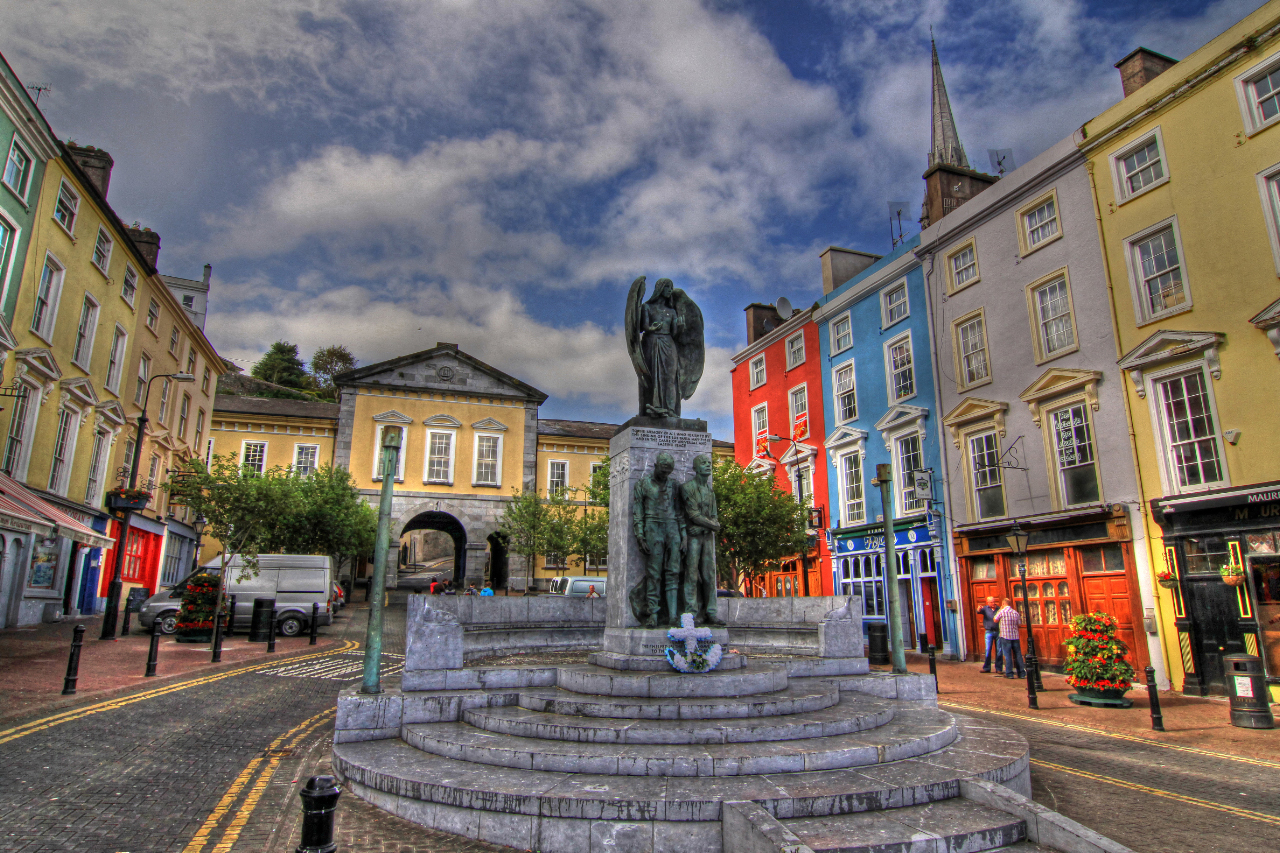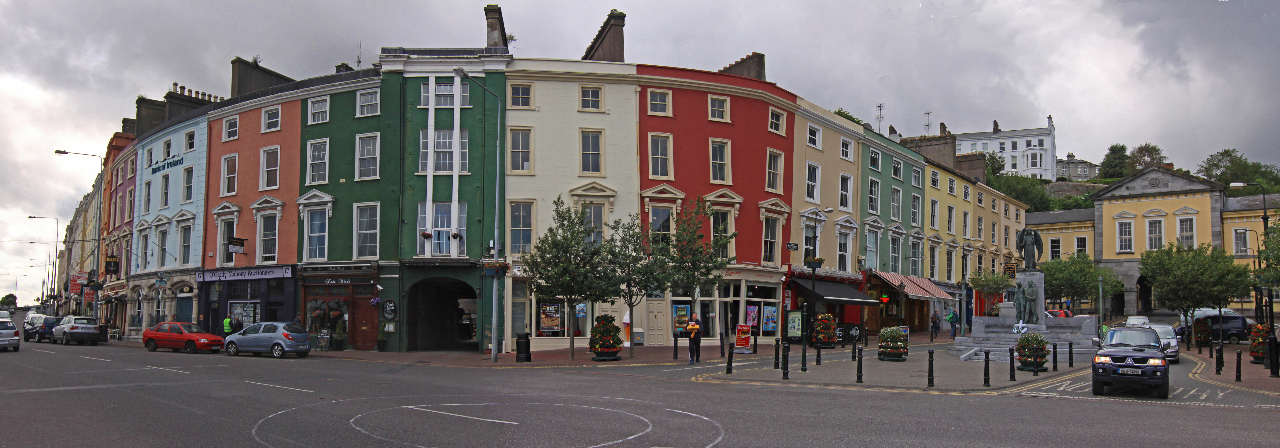As ancestors of emmigrants that came from Ireland, one of our stops had to be the Emmigration Heritage Center in the port town of Cobh, which has an amazing maritime history. One of the major transatlantic Irish ports, Cobh was the departure point for 2.5 million of the six million Irish people who emigrated to North America between 1848 and 1950. Cobh was also a major embarkation port for men, women and children who were deported to penal colonies such as Australia. Cobh was also the embarkation point for many troop ships during the many wars in Europe, and also for many cruise ship lines. including the White Star Line. On 11 April 1912, Queenstown (a former name for Cobh) was the final port of call for the RMS Titanic before she set out across the Atlantic on her ill-fated maiden voyage. Titanic moored in the harbor as several smaller tender vessels delivered luggage, mail, and 123 irish passengers, of which only 44 survived the sinking. The Cunard passenger liner RMS Lusitania was sunk by a German U-Boat off the Old Head of Kinsale while en route to Liverpool in on May 7, 1915. 1198 passengers died, while 700 were rescued. The survivors and victims were brought to the town of Cobh, and over one hundred lie buried in the Old Church Cemetery just north of the town. The Lusitania Peace memorial is located in Casement Square opposite the arched building housing the Cobh Library and Courthouse. The Heritage Center also contains many letters from survivors of the Lusitania, expressing their gratitude for the townspeople, who took special care of the survivers until they were ready to travel once again.
Cobh is also a very visual place. Its buildings are brightly colored all along the aged waterfront, and the entire town is dominated by Colman’s Cathedral which is directly up the hill from the waterfront. I took several pictures of the main street along the waterfront, where a row of buildings formed a long continuous arc (they are built that way, it’s not distortion created by the camera!) that end in Casement Square which is centered by the Lusitania Peace Memorial. The memorial features a pair of figures, either crew or passengers, under the watch of accompanying angel directly overhead.


